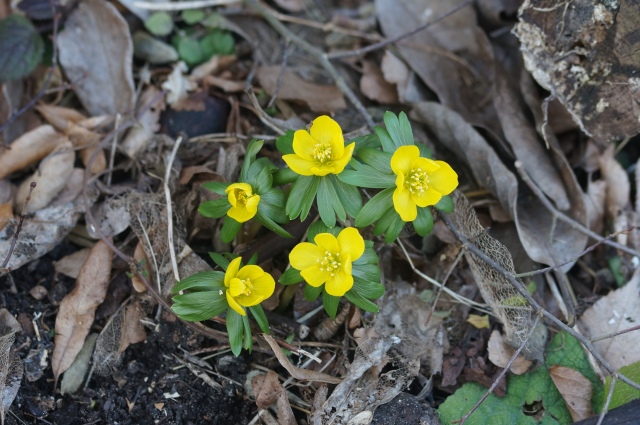When it comes to gardening for pollinators, we often look at flowers and visit garden centres or look online to see which pretty flowers we can buy. However, we sometimes forget the fact that many of our native shrubs are great for pollinators too.
In my garden, I have created a hedgerow. Some of the shrubs have grown well and one of these plants is purging buckthorn (Rhamnus cathartica). It is a dioecious shrub: male and female flowers are found on different plants. You will not see this shrub in garden centres as the flowers are tiny and greenish and not showy at all. Nevertheless, this shrub is one of the foodplants for the brimstone butterfly and around May, the shrub is covered in thousands of flowers, each producing a bit of nectar and the male plants produce pollen as well.
Many honeybees visit this plant but also solitary bees such as the early mining bee, Andrena haemorrhoa can be seen visiting this plant. As the plant is long-lived, many generations of solitary bee can use this plant as a source of pollen.
Another plant which is thriving despite the current drought is barberry, Berberis vulgaris. The more mature these shrubs become, the more flowers the shrubs produce. Bumblebees and tawny-mining bees (Andrena fulva) love this plant. The flowers produce nectar and pollen.
Barberry in flower and a buff-tailed bumblebee visiting the flowers.
A new species of solitary bee that I saw feeding on barberry was Andrena tibialis or grey-gastered mining bee. Always thrilled to see a new species as it somehow illustrates that the garden must be interesting enough for the bee to visit.
Wild roses deserve a space in our gardens too. The roses do not produce nectar or perhaps in tiny quantities but the flowers produce a large amount of pollen (look at the anthers!).
Rosa tomentosa is the first native species of Rose that has started to flower. A rare and beautiful shrub. I like the colour of its flowers, a very soft pink. The flowers are good sources of pollen for many species of bumblebee.
The other kind of Rose that is in flower now is the very rare Rosa agrestis. Its distribution is now limited to a small part of our country. This one is doing very well too, it can tolerate dry soil. The flowers are usually pure white but sometimes pink flowers do occur.
In autumn, thanks to the pollination by all these insects, there will be many berries and hips to feed the hungry birds in autumn and winter. A win-win situation.





























































 The garden is slowly waking up from hibernation it seems.
The garden is slowly waking up from hibernation it seems.



